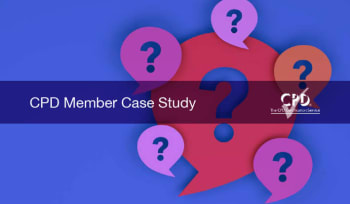This informal CPD article on Algorithmic Trading: Learn, Trade and Automate was provided by Quantinsti Quantitative Learning, a pioneering Algorithmic Trading Research and Training Institute focused on preparing financial market professionals for Algorithmic and Quantitative Trading worldwide.
The financial markets have been the most exciting in recent times. There are swift highs and lows in the markets that are governed today by much high-end equipment and intricate network infrastructure. By the time you get on the phone to tell your broker about some stock or manually try to buy or sell it, it might have already traded up and down countless times in that duration. Last month, the Dow broke many records (fastest bear market, largest one-day gain, etc.) Witnessed some of the largest intraday swings and so much more. All in only a span of a few weeks. Oh, and it did help some traders rise very quickly.
You might think that keeping up with these rapid and constantly moving markets while managing hundreds of positions across your portfolio is impossible. That’s NOT TRUE – you can achieve that level of operability today. The power of algorithms coupled with the economically viable cloud-based solutions has made it possible even for individual investors & traders to make use of quantitative & algorithmic trading techniques.
Already thinking about it? Well, you are not alone, Business Insider had reported that Algorithmic Trading would grow at 11% CAGR to 19 Billion USD in 2024, which describes the tremendous potential it possesses. Yes, you can say that the volatility in the stock markets today is driven by algorithms.
How does Algorithmic Trading work?
Algorithmic Trading is completely automated, devoid of emotions, regulated, monitored and governed by algorithms that are designed and owned exclusively by you. This helps save time, executes trades in microseconds and prevents extreme losses in many cases. You create algorithms from your knowledge of the markets, quantitative analytical skills, and your programming prowess. Once created, you test them against the historical data, improve it, get it approved by the regulatory bodies and then you are simply on your way to trade.
One can create programs that will analyse the historical data from the markets based on certain parameters and key points, and then compare that finding with the present-day market scenario to give you an idea of what to expect. When you apply your algorithms to your trading strategies, based on the buying and selling parameters set by you, your algorithms do your bidding. The more precise your understanding, skillset, practiser by backtesting and improving – the better are your chances to perform well in the markets.
Algorithmic trading surfs the highs and lows, sometimes even predicting how the next move in the markets would seem like. So, how is that possible? With evolving sciences like Machine Learning and Artificial Intelligence, it is possible today and being practised too.
What are the prerequisites to Learn Algo Trading?
Very few. You should have a certain knowledge of the markets and have a grasp on either of the programming languages when it comes to trading – this will help you a lot!
Why? Let us consider the recent news by Bloomberg which stated that first Citibank made learning Python for its traders compulsory and a few months later, Citigroup started full-fledged teaching its traders how to code and its coders how to trade. This is enough reason to understand where the world is progressing and you need to be ready to grab such opportunities.
But why Python? Python, a programming language used for coding the Algo programmes, ranks in the top 3 of leading indexes, especially the TIOBE index, and is also recommended by communities like StackOverflow. Moreover, it is free, easily compared to other programming languages, and has countless libraries that will make things easier for you as well as extensive support online. This makes it more than qualified for Algorithmic Trading.
Knowledge of Quantitative techniques, statistical analysis, math skills, etc. can give you an edge above everyone else. Man Group Plc. has used quantitative techniques on two-thirds of its assets and that it uses Machine Learning to enable the trading volume of 6 to 7 trillion USD a year across its clients, according to a recent report. These are more than a few reasons that these skills have a very huge demand.
It was recently reported that Citibank has started training it’s traders to code and has started training its coders to trade. Perhaps they understood vital trivia quintessential to the core of Algo Trading. Numerous jobs have emerged for the candidates with the right skill sets necessary to amalgamate trading, programming, quantitative techniques and many quality skills.
How do you learn Algorithmic Trading?
One can think that they can begin learning by themselves by referring to online free resources and tools, but that puts forth reliability and questions the exclusive nature of that content. It is always better to approach a particular institute or review some courses before you dive into it. With CPD and your faith in us, our resolve to share quality education and services grows in leaps and bounds. So go ahead – Learn. Trade. Automate.
We hope this article was helpful. For more information from Quantinsti Quantitative Learning please visit their CPD Member Directory page. Alternatively please visit the CPD Industry Hubs for more CPD articles, courses and events relevant to your Continuing Professional Development requirements.













